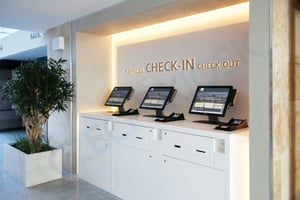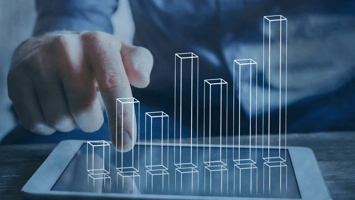As the end of 2024 nears, and we wrap up planning for 2025, it’s crucial we don’t lose sight of one...
Blog
From Last-Minute Larrys to Early Birds: Decoding Guest Booking Habits
Hotel commercial leaders have a puzzle to solve and that is time-management while balancing service, data analysis, and communication with stakeholders. In a July 5, 2024 release by the American Hotel & Lodging Association (AHLA), the industry reported a 196,000 hotel staff shortfall in comparison to February 2020. As we enter the 2025 hotel budget season, musings on doing more with less have become a highlighted theme. There has been a stark difference in consumer behavior and buying patterns post-pandemic. Hoteliers who choose to heavily weight their time interpreting holistic forecasts rather than dropping like a pinball through analysis of short-term on-the-books changes will emerge as the most opportunistic leaders in optimizing their valuable time.
Unlike prior recovery cycles, the post-pandemic era has seen average daily rates rise at a faster clip than demand. Flexible cancellation policies were extended almost immediately after March 2020 as not only a lifeboat for hotels, but a necessity with Covid-19 health risks. Many of these flexible rate plans still exist today, with advance purchase rates representing a mere 2.8% of weekend demand mix in 2023 and 1.9% of the weekday (Monday-Wednesday) demand mix.
Guests have been guided toward booking with flexibility and as a result, the industry experienced 43% of cancellations occurring within 2 days of arrival across the full-year 2023. Across all 2023 reservation data, a grand total of 32% of reservations were canceled. Some causes of this trend are unforeseen circumstances, price sensitivity, and a growing diversification of accommodation supply, with travelers showcasing less of an appetite for prepaid, non-refundable rate plans.
This magnifies short-term volatility, and when the broader picture of impact by business mix and channel goes unmanaged, this leads to knee-jerk reactions. Indirect channels have even greater inflated cancellation rates over direct channels, as Brand.com, Voice and Property Direct allow for more control of the customer journey, which mitigates some of the consumers' drive to shop around. Commercial leaders require a competitive lens with analysis to each customer segment for monitoring the cancellation impact. By expanding to targeted competitor groupings and the broader submarket view, a hotelier will gain a solid understanding of demand expectations, diminishing the outcome of impulsive decision-making.
Compounding the effect of booking behavior changes for even the most data savvy of commercial leaders is the shrinking booking window. An analysis of all 2023 reservation data reveals that 47% of bookings are made within 7 days of arrival. If it is common practice for guests to shop around, book and rebook, stack reservations and commit in the week-for-the-week, then it makes sense to build a holistic picture of the final expected impact of this behavior.
Let’s look at a simple example of the impact of volatility by applying these cancellation and lead time ratios to a single property. If the property has 100 room nights on the books 2 days out to arrival, we can measure the approximate impact to this arrival date by applying the industry percentages. Roughly 14 of the 100 room nights will result in cancellations (=18+16+10/3). With the application of the lead time percentages another 27 room nights would be gained for this same arrival date. The hotel would have a net pick up of 13 room nights, which is a lot of activity to monitor!
This is why the Kalibri Labs data science team provides an 18-month predictive forecast on the HummingbirdPXM commercial strategy platform. This forecast uses a large training set of annualized historical data that considers seasonal expectations and submarket thresholds by rate category. Additionally, it is refined with a separate model that places greater emphasis on recent pickup trends. Most importantly, cancellations and booking lead-times are feature sets imperative to the models. Most of us rely on machine learning every day through weather applications, scrolling through social media or navigating shifting traffic patterns. The Kalibri Labs predictive forecast models can remove human biases and place more reliance on feature sets tuned by channel mix, sustainable value positioning, price sensitivity by rate category and day of week swings.
A hotel’s revenue capture and staffing needs are at risk if too much reliance is placed on simple on-the-books monitoring. The steady use of automated forecasting will greatly reduce the workload for hotel teams, allowing them to focus more on commercial strategy and increasing revenue. Headwinds such as inflation, rising costs and political uncertainty are going to influence 2025 hotel budgets and the team at Kalibri Labs wants to be your partner in navigating the road ahead with ease.
____
Sources:
AHLA workforce report: Hotels add 700 jobs in June, WASHINGTON (July 5, 2024)




